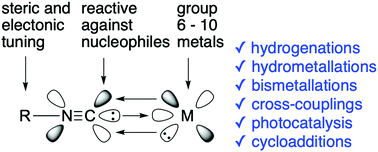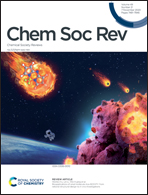Isonitriles as supporting and non-innocent ligands in metal catalysis
Abstract
Isonitriles, being competent σ-donors, show a strong aptitude to form transition-state metal complexes. Nevertheless, until the end of the last century, few metal–isonitrile catalyzed processes were known. Only more recently, scientists recognized the considerable potential of isonitriles as ligands in metal catalysis utilizing both commercially available but also specially designed representatives of this compound class. Isonitrile ligands, which can be both innocent or non-innocent constituents in metal complexes, contributed to the discovery of new catalytic processes and thereby to one of the fastest growing areas of organic chemistry. This review focuses on the special properties and attributes metal–isonitrile complexes offer towards their application in catalysis.



 Please wait while we load your content...
Please wait while we load your content...